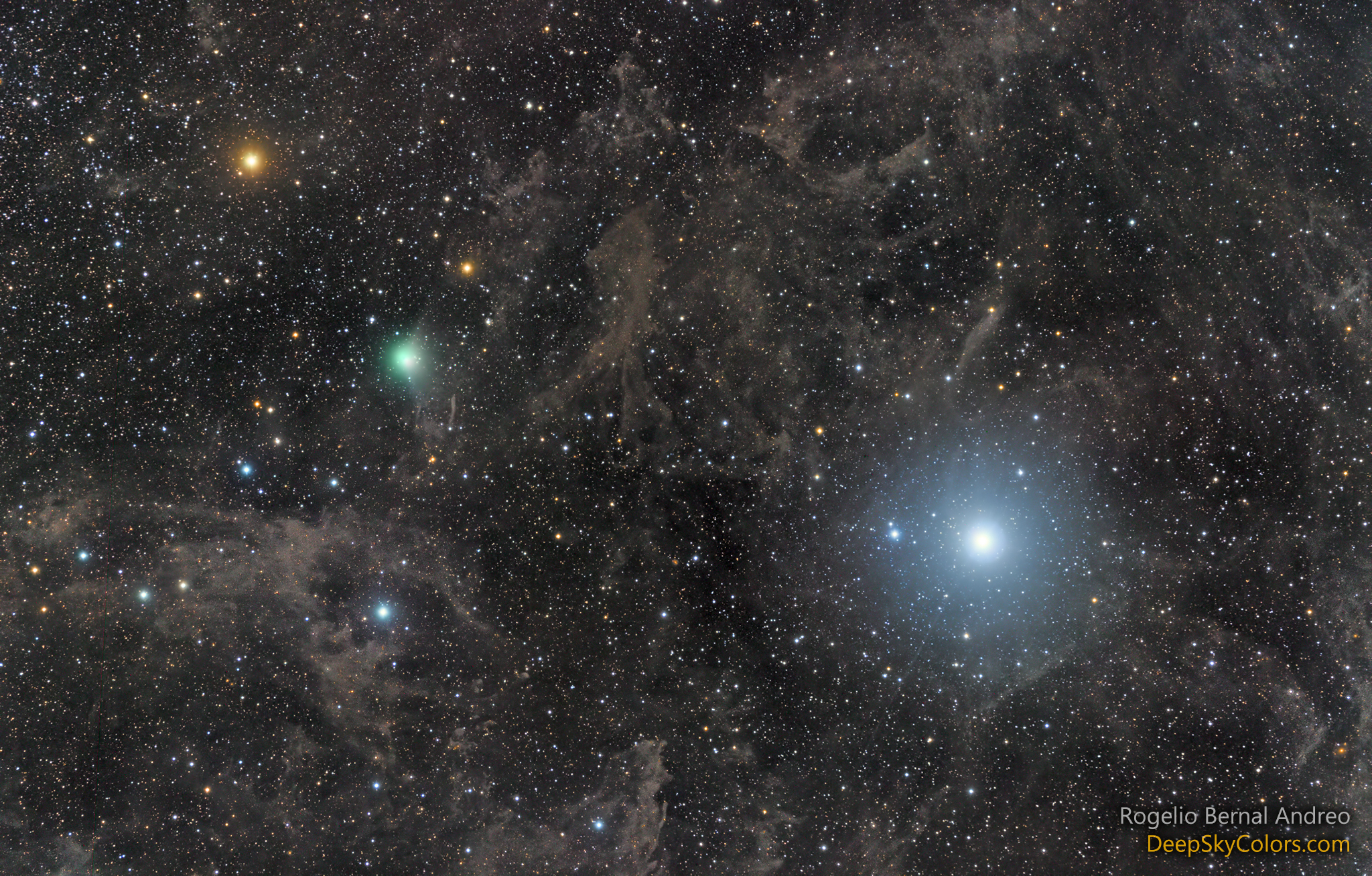
Copyright:
Rogelio
Bernal Andreo
原文:
One of these two bright sky objects is moving. On the right is the famous star Polaris. Although only the 45th brightest star in the sky, Polaris is famous for appearing stationary. Once you find it, it will always appear in the same direction — all night and all day — for the rest of your life. This is because the northern spin pole of the Earth — called the North Celestial Pole — points near Polaris. On the left, about ten million times closer, is Comet Lovejoy, which noticeably changes its sky position by the hour. The featured image was taken last week. Officially designated C/2014 Q2 (Lovejoy), this disintegrating snowball is on a visit from the outer Solar System and will only appear near the North Star for a few more weeks. That should be long enough, however, for northerners with binoculars or a small telescope to see the greenish coma of this fleeting newcomer, perhaps with the help of a good star map.
中文翻譯:
在這兩個明亮的天空物體中,有一個正在移動。右邊是著名的北極星(Polaris)。雖然北極星只是天空中第四十五亮的星星,但因為它看起來像是靜止的,所以非常有名。當你找到它後,它將永遠在同一方向出現——無論是白天還是黑夜,直到你生命的最後一刻。這是因為地球的北極旋轉軸——稱為北天極(North Celestial Pole)——指向北極星附近。左邊的則是大約近一千萬倍的距離的哈彌星(Comet Lovejoy),其天空位置隨著時間每小時顯著變化。這幅圖片是在上週拍攝的。哈彌星的官方名稱是C/2014 Q2(Lovejoy),這顆正在解體的雪球來自太陽系的外圍,並且將只在北極星附近顯現幾個星期。然而,這對於持有雙筒望遠鏡或小型望遠鏡的北方觀星者來說應該足夠了,可以看到這位瞬息萬變的訪客的綠色彗髮,或許還需要借助良好的星圖。
#北極星 #哈彌星 #CometLovejoy #觀星 #天文學 #星空探索 #北天極 #綠色彗星 #天文愛好者
來源:NASA每日圖片


